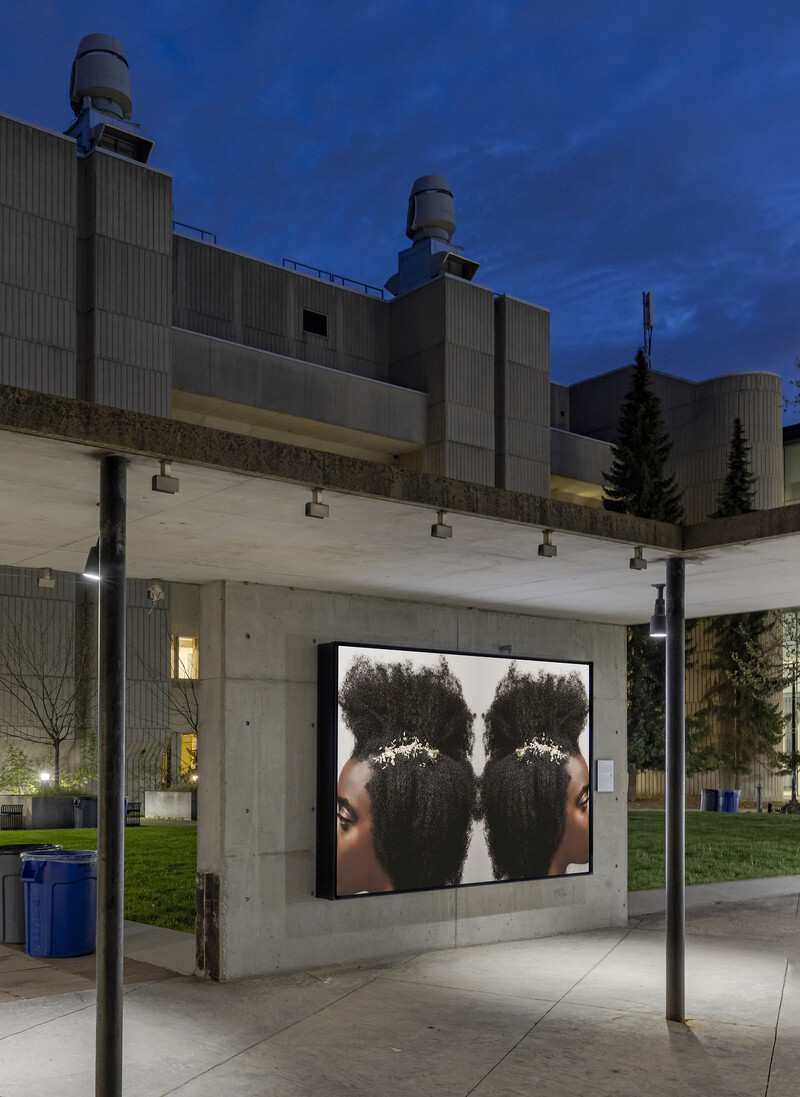- Info
How to Read the Reader
- May 28, 2025
Learning Otherwise: Embodiment, Language, and Crip Temporalities in RA Walden’s Practice
- Feb 14, 2025
The Agency of Walking
- Jan 21, 2025
Groundwater
- Jun 25, 2024
QUIET PARADE: Precedent Projects
- Jun 18, 2024
Unearthing Stories: Tracy Qiu on Decolonizing Plant Narratives
- May 27, 2024
Resources and Research: Overseeding
- Mar 28, 2024
The Blackwood Index on Campus
- Feb 26, 2024
Building Interrelationships through Interpretive Text
- Feb 07, 2024
Listening is Our Ongoing Score
- Dec 06, 2023
To resist, to empower, to heal
- Nov 20, 2023
Queer Orientations for Future Worldmaking
- Nov 02, 2023
“The sex ed we have as teenagers is precarious”: A timely conversation between Lorena Wolffer and Kira Sosa Wolffer
- Oct 27, 2023
Readings and Resources on Palestine
- Oct 20, 2023
Difficult Art
- Jul 13, 2023
Gestures Toward the Miraculous: A Q&A with Erika DeFreitas
- Jul 06, 2023
“A toast! to you”: Create Your Own Meal of Choices
- May 30, 2023
Sense Encounters
- May 16, 2023
What brings you here? SDUK Readership Survey
- May 05, 2023
Here, Better, Now: Connections
- Apr 06, 2023
Here, Better, Now: Foundations
- More…

“The European approach to rubber, as with other plant extracts, was always use-oriented. The heroic history of science characterizes early botany as a ‘pure’ scientific pursuit, invested particularly in the naming and classifying of plants and the order of nature. What is often left unsaid is that early 18th-century botany as an academic discipline existed only because knowledge about the properties of plants for medicinal and economic purposes was important to European states.”1
Throughout summer 2024, the 3-part lightbox exhibition Overseeding: Botany, Cultural Knowledge, and Attribution illustrates important histories of resistance and extraction pertaining to the global plant trade. Alighting on specific histories in the Americas, Suriname, and Indonesia, the exhibition demonstrates the varied ways plants have been incorporated into colonial expansion and Western science. As Sria Chatterjee notes above, botany has always been tied to resource exploitation. Moreover, the field’s own scientific roots are deeply indebted to the Indigenous peoples from whose territories’ plants were stolen:
”Colonial botany involved a process of both extraction and erasure: the extraction of local knowledge, plants, information and labour; and an erasure of Indigenous knowledge and ecological practices. Scientific botany attempted to universalise the system by which we understand life. A plant that was brought to an institution such as Kew Gardens [in London, UK] would be given a Latin name, and in the process, the local knowledge that existed about that plant would be extracted and the source of the knowledge erased. By supplanting the local name, the world in which that plant existed also disappeared.”2
As part of Overseeding, guest curator Su-Ying Lee has shared a bibliography of resources related to the exhibition. Among the articles, blog posts, videos and podcasts below, readers will find general resources on the intertwined histories of botany and colonialism, and research materials specific to each set of images.
Overseeding: General Resources
- Ros Gray and Shela Sheikh, “The Coloniality of Planting,” The Architectural Review, January 27, 2021, https://www.architectural-review.com/essays/the-coloniality-of-planting.
- Rashad Bell and Nuala Caomhánach, “Inside Black Botany: A Conversation with the Curators,” New York Botanical Garden, February 23, 2021, https://www.youtube.com/watch?v=cCdefpMRe4s.
- Isabelle Charmentier, “Linnaeus and Race,” The Linnean Society of London, September 3, 2020, https://www.linnean.org/learning/who-was-linnaeus/linnaeus-and-race.
- Lauren Audi, “John Tyley: Caribbean Botanical Illustrator in a Colonial World,” Untold Stories: Living and Working with Nature (n.d.), https://untoldstories.net/1810/03/john-tyley-caribbean-botanical-illustrator-in-a-colonial-world/.
- “Decolonising our Collections: John Tyley and the Breadfruit Tree,” The Linnean Society. July 2021, https://www.youtube.com/watch?v=wbBJJCNL5O0&t=71s.
- Maura Flannery, “Plant Humanities and Decolonial Collections,” Herbarium World, December 14, 2021, https://herbariumworld.wordpress.com/2021/12/14/plant-humanities-and-decolonial-collections/.
- Sria Chatterjee, “The Long Shadow of Colonial Science,” Noema Magazine, March 11, 2021, https://www.noemamag.com/the-long-shadow-of-colonial-science/.
- Jim Endersby, “The Role of Kew and Colonial Botanic Gardens,” Gresham College, December 2, 2019, https://www.youtube.com/watch?v=XBunB3lit5g.
- Xan Sarah Chacko, “Digging up Colonial Roots: The Less-Known Origins of the Millennium Seed Bank Partnership,” Catalyst Journal, Vol. 5 No. 2 (2019), https://catalystjournal.org/index.php/catalyst/article/view/31947/25605.
- Banu Subramaniam, “Decolonizing Botany,” Linda Loring Nature Foundation, March 14, 2022, https://www.youtube.com/watch?v=CW0MvIS4afI.
Cycle 1: Inyang Essien
- Judith A. Carney, “’With Grains in Her Hair’: Rice in Colonial Brazil,” Slavery and Abolition, Vol. 25 No. 1 (2004), https://geog.ucla.edu/sites/default/files/users/carney/33.pdf.
- Tinde van Andel, “How the Maroon Ancestors Hid Rice Grains in their Hair,” July 2017, https://www.youtube.com/watch?v=4H1IbY6PGIk.
- “African Rice in the Amazon with Dr. Tinde van Andel,” Foodie Pharmacology podcast, October 26, 2020, https://foodiepharmacology.podbean.com/e/african-rice-in-the-amazon-a-history-of-slavery-and-resilience-in-the-rainforest/.
Cycle 2: patricia kaersenhout
- Antonia Trojok, “Museum für Naturkunde Explores Maria Sibylla Merian’s Legacy and Editions of Her Metamorphosis,” Biodiversity Heritage Library blog post, June 3, 2021, https://blog.biodiversitylibrary.org/2021/06/mfn-explores-maria-sibylla-merian-legacy.html.
- Elizabeth Polcha, “Breeding Insects and Reproducing White Supremacy in Maria Sibylla Merian’s Ecology of Dispossession,” Lady Science blog, June 20, 2019, https://www.ladyscience.com/breeding-insects-and-reproducing-white-supremacy/no57.
- Maria Sibylla Merian, “Metamorphosis insectorum Surinamensium,” Biodiversity Heritage Library online, https://www.biodiversitylibrary.org/item/129308#page/13/mode/1up.
Cycle 3: Lifepatch with Kawan Pustaha
- “Book of Ritual Knowledge (Pustaha),” Toba Batak people, c. 19th–early 20th century, collection of the Metropolitan Museum of Art, https://www.metmuseum.org/art/collection/search/315441.
- Faisal Husni, “Curator Insights: Pustaha – Bark Manuscript of the Batak Communities,” Asian Civilizations Museum, September 3, 2021, https://www.facebook.com/asiancivilisationsmuseum/videos/241538374548655.
- Irawan Santoso Suryo Basuki, “Why the role of native Indonesians in developing science is often overlooked during colonialism,” The Conversation, July 27, 2020, https://theconversation.com/why-the-role-of-native-indonesians-in-developing-science-is-often-overlooked-during-colonialism-143263.
- “Kebun Raya Bogo – From Experimental Garden to Whistle Blower,” Wereld Museum, Amsterdam (n.d.), https://amsterdam.wereldmuseum.nl/en/kebun-raya-bogor-from-experimental-garden-to-whistle-blower.
- “Stolen Knowledge,” Center for Plants & Culture (n.d.), https://www.plantsandculture.org/stolen-knowledge.